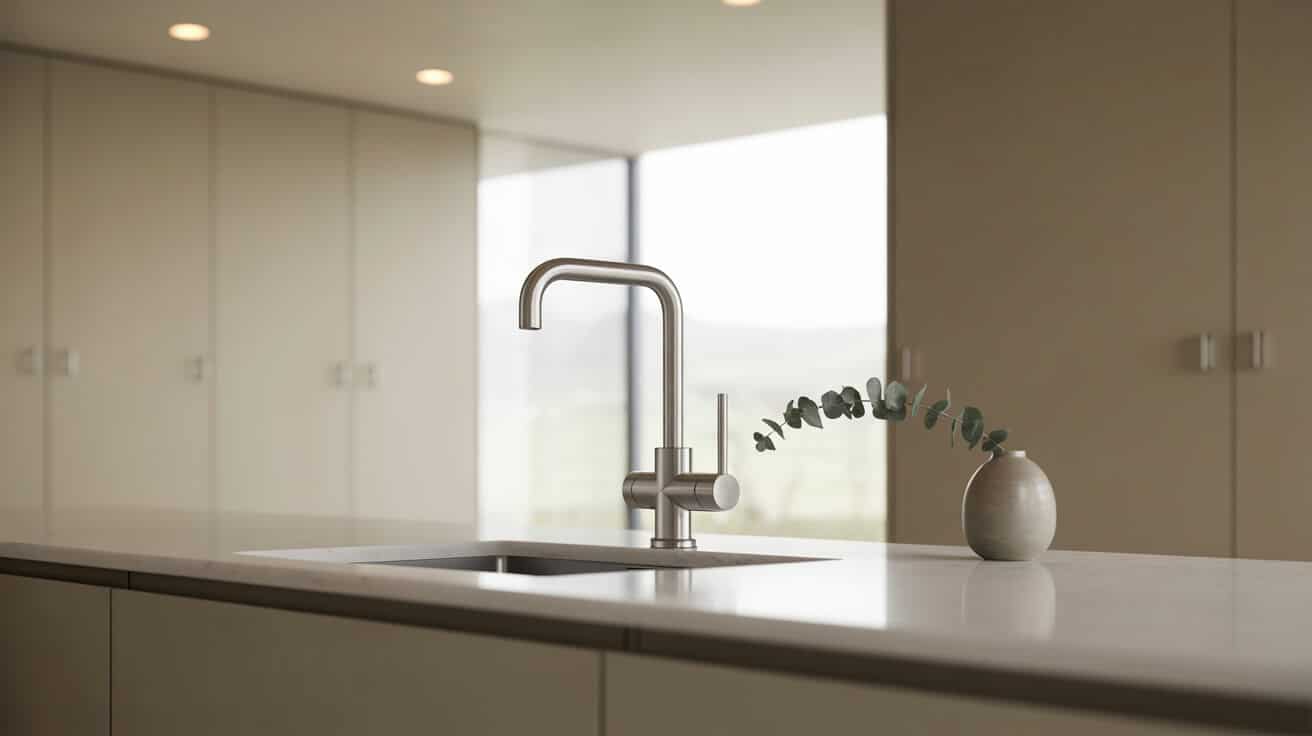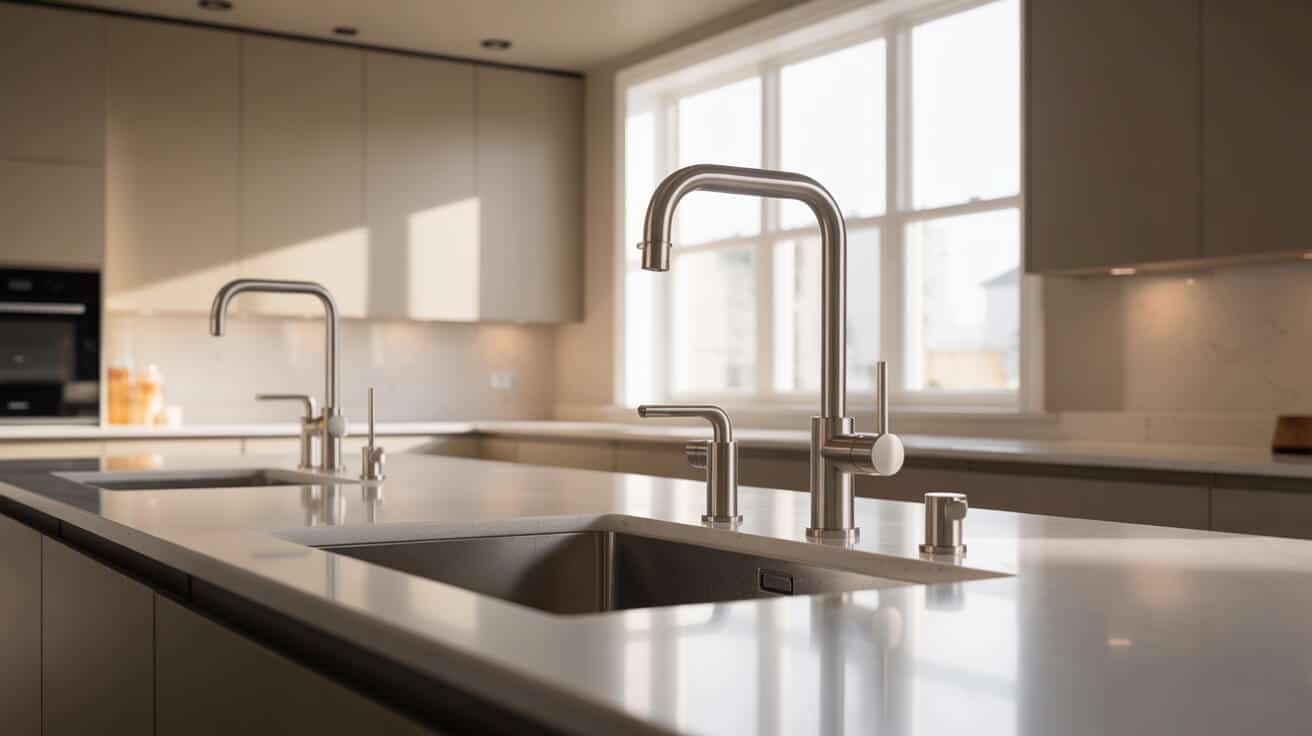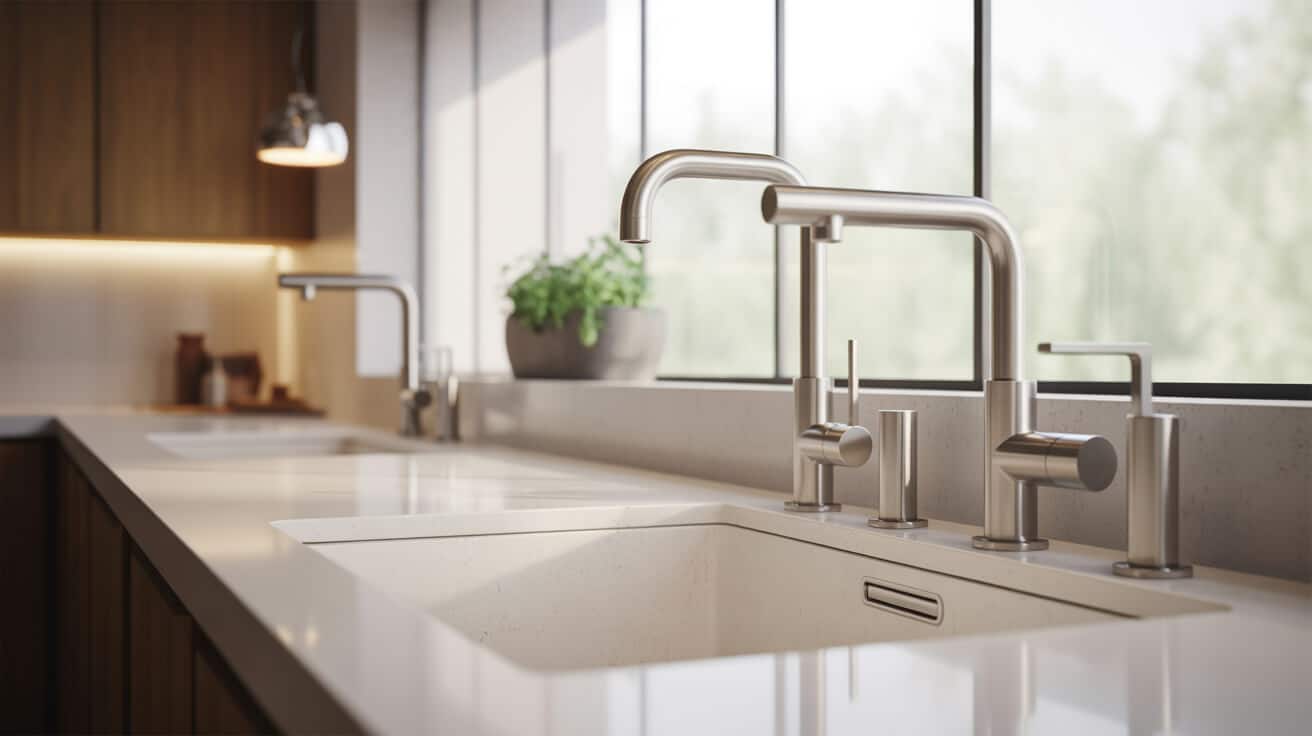Taps, also known as faucets in some contexts, serve as the primary interfaces between your building’s water supply and its users. mixer taps extend functionality by permitting precise adjustment of water temperature and blending of supplies. Their development is intertwined with public health improvements, increased water access, and rising expectations for reliability and aesthetics. Your company’s choice of tap and mixer technology affects water conservation, user experience, compliance with regulations, and lifecycle maintenance costs. Premium service providers such as Plumbers 4U demonstrate the value of compliance-focused installation and aftercare, reducing risks and enhancing the value of your property assets.
Etymology or Name Origin
The word “tap” derives from Old English and Dutch roots, initially referring to a plug for stopping or drawing fluids from a vessel. Over time, it became associated specifically with devices used to control water flow. “Faucet,” of French origin (fausset), is more prevalent in North America and was historically applied to beer and wine casks before entering the lexicon of plumbing. The term “mixer tap” emerged with the commercialization of blended hot and cold water valves in the late 19th and early 20th centuries, reflecting the functional expansion of tap technology. Industry-specific language, such as “thermostatic mixing valve,” “compression fitting,” and “cartridge,” often denotes distinct technical attributes or regulatory requirements.
Overview and Context
Taps and mixers function as the user-facing endpoints of water delivery networks, mediating the transition between pressurised supply and accessible flow. Their ubiquity across building types is the product of decades of technical, legal, and societal evolution. In a modern context, taps and mixers are required to address:
- Hygiene, by isolating water flows and minimising direct contact (particularly in sensor-operated variants).
- Temperature control, through precise blending for comfort and anti-scald safety.
- Water conservation, using aerators and flow restrictors to reduce waste.
- Sector-specific needs, such as anti-ligature design in mental health facilities or anti-microbial coatings in hospitals.
- Property management and letting compliance, including certified installation and documented maintenance for landlord and agent obligations.
History
Origins
Historically, water delivery within ancient civilizations relied on basic stopcocks and conduits hewn from wood, stone, or early metals. Roman innovations in lead and bronze allowed for the first durable valves and spigots. Mediaeval and Renaissance plumbing reflected nascent urban public health infrastructure, deploying taps in communal wells and private estates.
Industrial Emergence
The 18th and 19th centuries saw radical improvement in materials and manufacturing precision, with cast iron, brass, and steel becoming the baselines for fixtures. The development of screwable, replaceable washers in compression taps enabled the rise of standardised domestic plumbing. The late Victorian era brought about the “mixer,” first patented in the UK and US, letting one control hot and cold inputs with a single device—an innovation accelerated by the growth of gas and electric water heating.
Contemporary Evolution
Modern taps and mixers exhibit a spectrum of mechanical and digital advancements. Ceramic disc and cartridge valves are now the norm, offering drip-free security and low-torque actuation. Sensors, solenoids, and thermostatic controls have moved from public restrooms to high-end residential kitchens. Finishes evolved from utilitarian brass and chrome to powder-coated, PVD, and even antimicrobial options for specialist environments. Stringent standards such as WRAS approval and the implementation of Part G of the UK Building Regulations have elevated both product safety and technical expectations, directly impacting compliance and insurance for your properties.

Concept and Description
Structural Components
A modern tap or mixer is composed of:
- Body and Spout: Forms the water channel and defines outlet style.
- Valve Mechanism: Can be compression (washered), ceramic disc, manifold, or thermostatic cartridge.
- Handles/Levers: For regulating flow (rotary, lever, push, or sensor-activated).
- Aerator/Flow Restrictor: Fitted at the spout to optimise stream and minimise splash/waste.
- Fixing Kit: Includes collars, nuts, washers, flexible tails, and mounting hardware.
- Seals and Washers: Ensure watertight integrity at interfaces.
Variations in component material, assembly, and design serve property-specific requirements—be it aesthetic coordination in residential spaces or enhanced durability for commercial kitchens.
Valve and Control Mechanisms
- Compression Valve: Requires multiple turns; relies on rubber or polymer washers to create a seal.
- Ceramic Disc Cartridge: Delivers rapid on/off action; highly resistant to leak and scale.
- Ball Valve: Uses a pivoting ball; common in single-lever operations.
- Thermostatic Cartridge: Employs fluid-filled elements to automatically modulate water temperature, vital for installations involving vulnerable users.
- Solenoid Valve: Forms the heart of sensor taps—touchless and widely adopted for hygiene-critical environments.
Material Considerations
Brass, universally preferred for its workability and corrosion resistance, is often coated with chrome, nickel, or coloured PVD for aesthetics and durability. Stainless steel offers potable water safety and extended lifespan. Specialist applications leverage antimicrobial copper, polymers, or alloy hybrids for unique settings.
Assembly and Mounting
Installations may use:
- Deck-Mounted Configurations: Fixed through holes in a basin, sink, or bath.
- Wall-Mounted Variants: Plumbed directly into wall pipework for accessible or design-focused settings.
- Monobloc: Uses a unified hole/escutcheon system, typical in modern kitchens and bathrooms.
Functionality, Purpose, and Applications
Flow and Temperature Regulation
Mixers integrate hot and cold supplies, enabling the user to select the desired temperature. Thermostatic options incorporate automatic shut-off, preventing harmful spikes—a requirement in care homes and hospitals. Flow is finetuned by the internal valve geometry and outlet design.
Water-Saving and Hygiene Features
Aerators decrease water use without compromising performance, supporting sustainability efforts. Touchless and sensor-operated taps in commercial and institutional environments limit direct contact, reduce infection risk, and comply with safe occupancy mandates. Some models feature self-flushing protocols to limit waterborne contaminants during idle periods—a critical advantage for healthcare and multi-user facilities.
Accessibility and Inclusion
Design adaptations such as lever handles, high-contrast indicators, braille, and thermostatic protections broaden functional access for elderly residents, children, and those with disabilities—driven by legal requirements and cultural shifts towards universal design.
Sector-Specific Use Cases
- Residential: Prioritises cost-efficiency, style, and easy maintenance.
- Commercial/Food Service: Emphasises durability, rapid cleaning, and hygiene documentation.
- Healthcare/Care Facilities: Requires anti-microbial surfaces, thermostatic blending, and fail-safes.
- Education/Public Sector Assets: Balances vandal resistance with operational simplicity and compliance auditability.
Classifications, Types, and Variants
By Structure and Operation
- Pillar Taps: Separate hot and cold controls; historically prevalent, now used for traditional aesthetic or certain utility sinks.
- Monobloc Mixers: Single spout blends both supplies; lever or dual-handle control.
- Bridge and Deck Mixers: Elevated, dual-feed joining; classical and durable for commercial or period settings.
- Wall-Mounted: Fitted directly into wall; common in modern, accessible washrooms.
- Thermostatic Mixers: Automated blending, especially for safety in commercial and public environments.
- Sensor/Touchless: Activated by proximity, common in public facilities and adopted in upmarket residential spaces.
- Specialist Taps: Boiling, filtered, or sparkling water systems; graywater and rainwater outlets.
By Installation Environment
- High-Pressure: Compatible with fully pressurised systems (e.g., combi boilers).
- Low-Pressure: Adapted for gravity-fed or storage tank systems.
- Pumped: Integrated with additional pressure-boosting technologies.
By Application & Compliance
- TMV2: For general domestic/commercial
- TMV3: For healthcare, schools, and specialist settings
Systems, Tools, and Methodologies
Fitting and Installation Tools
Professional installation demands an extensive toolkit, including:
- Basin wrenches and pipe cutters
- Adjustable spanners and torque wrenches
- PTFE tape and joint sealant
- Flexible hoses and WRAS-certified fittings
- Cartridge pullers and specialist extraction tools
- Water pressure gauges and flow metering equipment
Installation Methods
Your installation scheme will generally follow:
- Preparation: Isolate supply, measure, mark, and verify location per compliance and use-case.
- First Fix: Fit supply pipes, isolation valves, and mounting plates, ensuring alignment with intended fixtures.
- Second Fix: Seat tap/mixer, connect flexible tails or rigid tubes, torque to specification, verify seal.
- Testing and Commissioning: Open supply, flush system, check for leaks, ensure correct operation and temperature control, record details for warranty and compliance.
- Documentation: Completion certificates and compliance logs may be required, particularly in rented, commercial, or institutional settings.
Plumbers 4U provides detailed checklists and audit trails for your compliance portfolio, minimising regulatory risk.
Testing and Commissioning
Testing encompasses:
- Static and dynamic leak checks
- Pressure, flow, and thermal validation
- Sensor/automatic device function checks
- Documentation of commissioning for asset management

Stakeholders and Entities Involved
Manufacturers and Key Brands
Prominent suppliers including Armitage Shanks, Bristan, Grohe, Hansgrohe, Franke, Crosswater, and Ideal Standard define the upper and middle market, while specialist brands support low-access, care sector, and commercial kitchen applications. Product selection is often influenced by compliance needs, service agreements, maintenance support, and design integration with other property assets.
Installers and Service Professionals
WRAS-approved, G3-unvented, and TMV-certified engineers ensure code-compliant selection, fitting, and aftercare. Large-scale installation projects often warrant planned maintenance contracts; your property management company may retain providers like Plumbers 4U for recurring servicing, fault logging, and rapid response.
Property Owners and Managers
Homeowners weigh purchase and installation costs against style, reliability, and ease of maintenance. Landlords balance legal obligations, insurance mandates, and tenant satisfaction, prioritising robust documentation. Facilities and property managers in commercial contexts are held to evidence-based oversight of safety, performance, and hygiene.
Legal, Regulatory, and Ethical Considerations
Water and Building Regulations
UK Water Supply (Water Fittings) Regulations 1999 and Part G of the Building Regulations direct product approval, installation methods, maintenance, and safety features. Antibackflow, contamination prevention, and WRAS accreditation safeguard potable water quality. TMV2/3-approved mixers protect against scald-related injury in rental, healthcare, school, and care settings.
Product Certification
Compliance to BS EN 200, BS EN 817, and BS EN 1111 forms the basis for legal sale and installation in most property classes. CE marking and Building Control notification provide additional assurances for new builds and major refurbishment.
Safety and Litigation
Insurers, local authorities, and courts increasingly expect certified installation and maintenance records, especially after leak or scald-related incidents. Landlords must keep documented evidence of annual inspections and prompt repairs.
Landlord and Agent Duties
Under tenancy law and health and safety codes, landlords and their agents are responsible for ensuring that installed taps and mixers are safe, free from defect, and certifiably maintained. Failure to comply can lead to fines, tenant compensation claims, or invalidated insurance.
Performance Metrics, Data, and Measurements
Key Performance Parameters
| Metric | Value Range | Regulatory Relevance |
|---|---|---|
| Flow rate (l/min) | 5–15+ | WRAS, Part G, water-saving codes |
| Operating pressure (bar) | 0.1–5 | Compatibility, safety, appliance integration |
| Temperature control accuracy | ±1–3°C for thermostatic mixers | TMV2/3, anti-scald, user protection |
| Service life (cycles) | 50,000–250,000+ | Lead time to replacement, warranty |
| Water-saving class | A, B, C (varies by scheme) | Environmental compliance, grant access |
Testing Protocols
Installers and property managers may use:
- Flow tests at commissioning and routine maintenance
- Dynamic/operational leak checks under varying pressure
- Periodic removal and laboratory or on-site water quality/legionella checks in specific sectors
Documentation
Retaining commissioning documents, manufacturer certificates, ongoing maintenance logs, and compliance data is now standard for asset owners, property managers, and facilities teams—particularly in rental, commercial, or grant-funded developments.
Challenges, Barriers, and Limitations
Operational and Technical Limitations
Typical faults include water hammer (caused by rapid valve closure), low pressure from ageing infrastructure or blockages, and progressive scale buildup leading to leaks, noise, or valve degradation. Compatibility with legacy plumbing, difficult retrofits, or mismatched pressure systems are challenges during upgrades.
Economic and Social Barriers
Initial investment in compliant, energy- and water-saving taps is offset by reduced utility bills and lower risk. Perceived complexity of documentation, insurance provision, and certification can inhibit proactive upgrades; informed FLMs, agents, and owners address these by partnering with trusted installation and service providers.
Policy and Philosophical Issues
The question of universal access, required upgrades for eco-compliance, and balancing historical conservation with modern health and safety standards shapes regulatory and market decisions. New mandates often interact with wider debates on water metering and property energy grading.
Impact, Influence, and Legacy
Sustainability and Resource Conservation
Efficient fixtures can lower water use by up to 50 percent compared to legacy installations. Flow restrictors and aerators are now default in most new taps, and inclusion of time-out features in sensor variants curbs waste in public and commercial properties.
Economic Value and Market Role
Advanced features—such as thermostatic controls, touchless activation, and design-driven aesthetics—have become selling points in both residential and commercial markets, improving resale value and lowering whole-life costs for owners and operators.
Design and Societal Integration
Design trends reflect broader cultural priorities. Minimalist forms, eco-labelling, and accessibility-compliant products signal growing convergence of style, ethics, and regulation. The Plumbers 4U approach aligns with delivering installations that not only comply but also enhance the value and habitability of your properties.
Future Directions, Cultural Relevance, and Design Discourse
Material science continues to yield new corrosion-resistant, hygienic, and even self-cleaning surfaces. Exacting performance standards evolve in tandem with tightening water-saving mandates, regulatory environments, and digitised property management. Social demand prioritises sustainable build, touch-free experience, and personalised comfort—reshaping design codes and product development cycles. The discourse on inclusivity and equity in water access extends into every aspect of tap and mixer technology, ensuring that the fixtures present in your homes, rental portfolios, and business assets increasingly mirror societal advances in wellbeing, safety, and efficiency.

